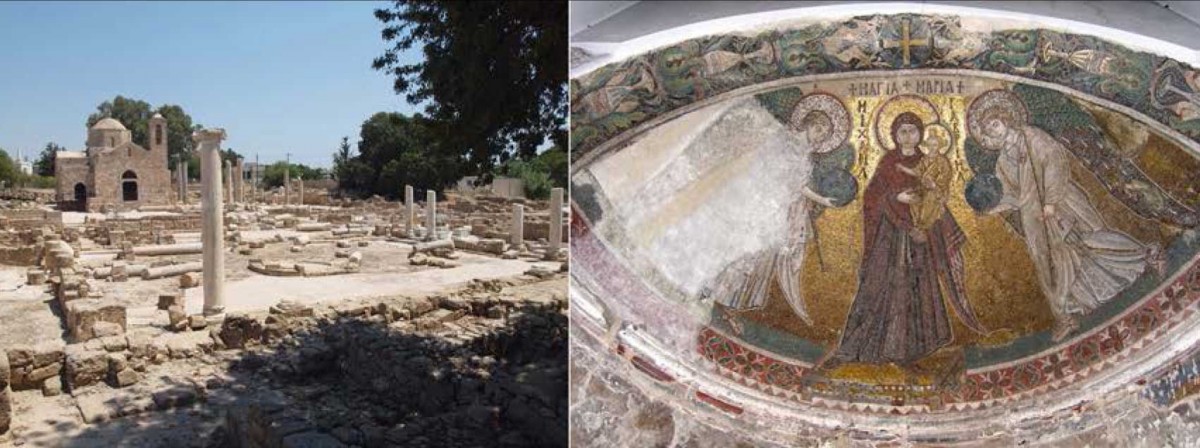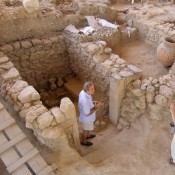Christianity was introduced tο Cyprus by Saint Barnabas in the middle of the 1st century AD and by the middle of the 4th century it had infiltrated Cypriot society to such an extent that it left visible marks not only on religious practices but also in everyday life. The few written sources that we have for this period, especially the Lives of Saints, often present an image of peaceful coexistence between pagans and Christians.
Early Christian Cyprus is the topic of the next Cyprus Seminar, organized by the Museum of Cycladic Art, which will be presented by Dr Fryni Hadjichristofi (Archaeological Officer, Department of Antiquities Cyprus).
As explained in the abstract of Dr Hadjichristofi’s paper: “With the consolidation of Christianity, the first basilicas were erected and the pagan themes in iconography were gradually replaced with Christian symbols and themes. The erection of the first Christian places of worship was part of a wider construction program, which followed the destructive earthquakes of 332 and 342. The first basilicas were built in big urban centres and had impressive dimensions. From the 5th century, the number of basilicas increased but their size was reduced; the prevailing type was now the basilica with three aisles.
By the end of the 3rd century AD Cyprus came under the political administration of the Diocese of the East (Oriens), whose capital was Antioch. After 536 and the reorganization of the Empire by Justinian the island was directly administrated from Constantinople. This political dependence, in combination with the geographical position of Cyprus on the crossroads between the Aegean, Asia Minor and the Levant, and on the sea route that linked Constantinople with Egypt determined the cultural horizons of the island.
“From the 4th century until the Arab attacks in the 7th century, the island prospered thanks to the exploitation of copper mines and timber resources, and also from trade in agricultural and other goods. This prosperity is reflected on the rich interior decoration of basilicas. Marbles, introduced from Proconnesus and other parts of the empire, were used for columns, closure screens, altar tables, ambons, etc. The walls of the basilicas were decorated with marble reliefs, mosaics, paintings and stucco while the floors were covered with colourful opus sectile and mosaics.
“In this seminar we will present the evolution and growth of art in Cyprus from the consolidation of Christianity in the middle of the 4th century until the Arab attacks in the 7th century.”
Discussant: Assistant Professor Platon Petridis
The lecture will be given in Greek.
Where and when: Museum of Cycladic Art, 4, Neophytou Douka str., Athens; Monday, March 2, 2015, 7.00 p.m.


